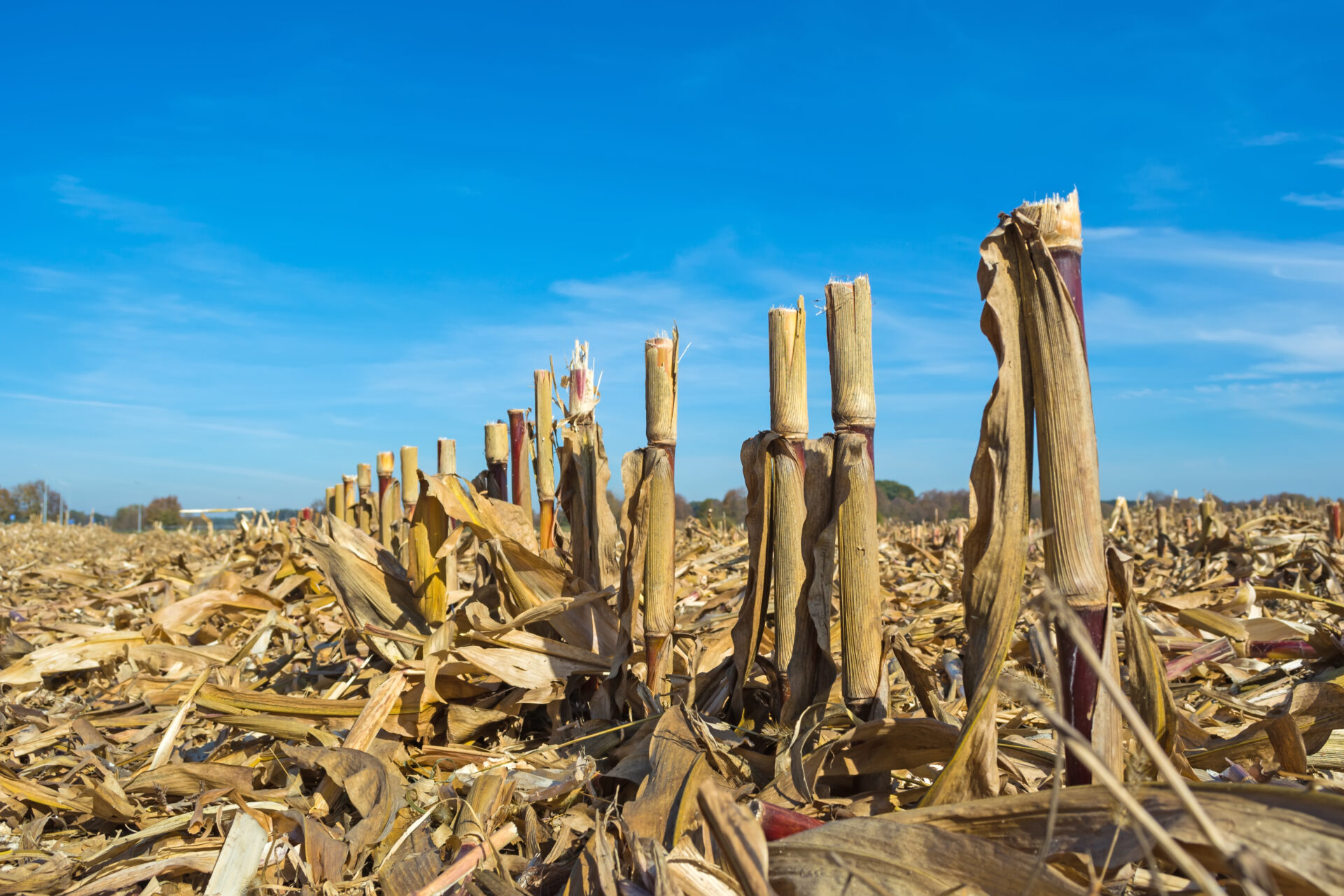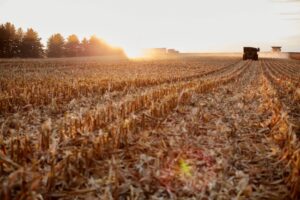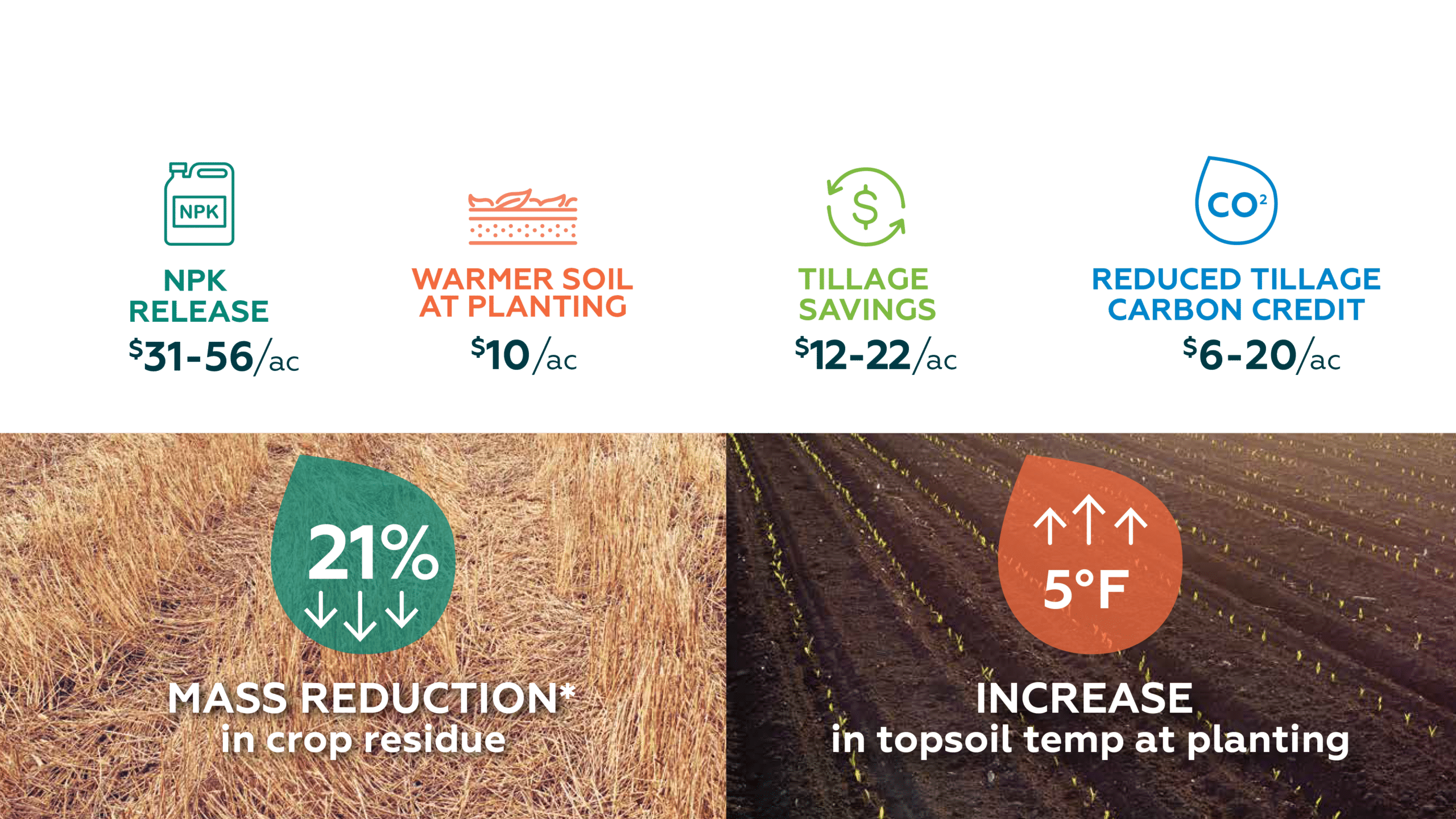Nov 12, 2025



There’s likely not a grower in the world excited to deal with their post-harvest residue once the fall harvest ends. Dealing with crop residue is expensive if you’re tilling or burning, and neither of these practices support long-term soil health.
Leaving crop residue can be equally, if not more frustrating. Excess residue either delays soil temperatures, clogs machinery, or can puncture tractor tires. At worst, crop residue can also harbor plant pathogenic fungi and bacteria that can infect next season’s crops.
Between tilling, burning, and leaving crop residue, keeping the residue in your field is the lesser of three evils. Now, there’s a better option for growers. A new, innovative technology is helping farmers use their crop residue to increase their return on investments (ROI) and supports long-term soil health.
By waking up and feeding your soil microbes a balanced, nutrient-rich meal, like PhycoTerra, growers can break down crop residue faster, even with high-density crops like wheat and corn.
Traditionally, growers have used three options for post-harvest residue management: burn, till, or leave crop residue in the field. New technologies, like waking up and feeding soil microbes, have been found to speed up the decomposition process for an innovative crop residue management solution.
A carbon-rich microbial food can help growers implement regenerative agriculture practices on their farm while delivering a return on investment for their post-harvest management practice. This is a huge benefit given other practices, like tilling and burning, are expensive with little to no ROI.
Leaving your crops in the field, or using a no-till or minimal-till practice has many long-term benefits for the health of your soil.
Leaving crop residue reduces erosion and improves soil texture and soil structure, improving overall soil health. It also traps carbon and releases it back into the soil upon decomposition.
An efficient and healthy soil microbiome can aid in decomposing and recycling nutrients bound in crop residue. Leaving crop residue also provides a slow release of nutrients, making it a long-term nutrient provider.
While it may be tempting to burn or till for a visually quick way to manage residue, widespread research supports it’s better not to. Check out all the nutrients you’ll be removing when burning or tilling corn.
New technologies have allowed growers to see the issue isn’t leaving post-harvest residue. The issue is post-harvest residue doesn’t break down fast enough in time to plant next year’s crop.
PhycoTerra is a carbon-rich soil microbial food designed to wake up and feed soil microbes. Around 75% of soil microbes on farms are dormant due to starvation. They cannot support plant health, improve soil texture and structure, or break down crop residue once dormant.
Applying 1-2 quarts per acre with your fall burndown can feed your active and dormant soil microbes and start the mineralization process. Feeding soil microbes also generates a generous return on investment:

Many farmers know stalk strength, great plant health, and increased yields are all beneficial when it comes to growing corn, but a nightmare when it comes to dealing with the post-harvest corn stalks. We’ve found there is a way for farmers to continue minimal or no-till practices to get the benefits of leaving crop residue, with a solution to speed up the decomposition process.
We found an average of 21% greater mass reduction of crop residue compared to the nontreated control, and a 5 degree Fahrenheit increase in spring soil temperature.
Experts suggest, for cover crops like wheat, it’s best to harvest, crimp, or mow, but don’t disturb the soil so roots can increase soil organic matter. In a recent wheat trial, we found 36% mass reduction in crop residue from October to spring planting by using PhycoTerra. In turn, topsoil temperature also increased 6 degrees Fahrenheit in this trial at planting.
Managing this year’s crop residue can move up next season’s planting by getting in the field a few days ahead. These extra three to five days of warm soil maximize yield potential without tilling and avoids tire punctures from previous seasons hard crop residue.
The first step to make your post-harvest residue management a more lucrative practice is to contact a local ag retailer to evaluate your farm’s soil health. After, make a plan to start feeding your soil microbes.
Once you do choose to invest in an innovative product, like PhycoTerra, your farm will experience a long list of benefits beyond the ones we’ve already mentioned.
Leaving crop residue and supporting your soil microbiome improves soil health and quality. Healthy and active soil microbes improve water infiltration and water holding capacity while limiting evaporation. Increased water productivity also supports crops throughout years of extreme weather, such as a drought.
When it comes to your crops, healthy soil supports seeds, and increases stand establishment. It also prevents soil compaction due to less heavy machinery passes. Active soil microbes also release locked nutrients to make your costly fertilizer applications go further.
Relying on traditional post-harvest management practices may not provide as many environmental, financial, short-term, and long-term benefits as supporting your soil microbes with a nutrient-rich food, like PhycoTerra.
Crop residue has always been a problem, rather than an opportunity for growers to make a return on their investment. We’re proving the proper crop residue management can actually benefit growers, rather than against them.
Around 40% of the cropland acres are no-till in the US. No-till practices no longer have to be frustrating come spring, even with hard to decompose crops like corn and wheat. By investing in a carbon product application for your soil microbes, you’ll be supporting your soil health, spring crops, and residue decomposition.
Growing more food for a growing population means more crop residue is inevitable for all growers. Prepare next year’s crops with an innovative post-harvest crop residue management tool. Fill out a contact form and one of our regional managers will be in touch.
Note: All trial data is current as of blog posting. For the most up to date trail data, please visit our trials page.